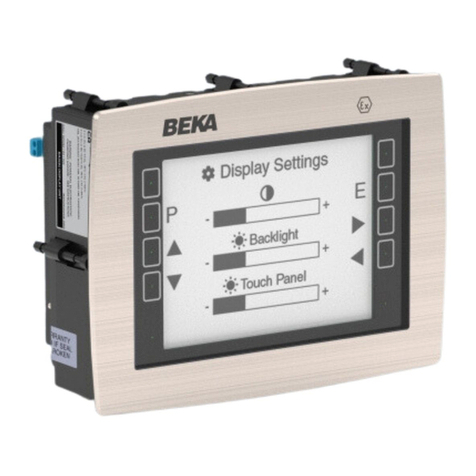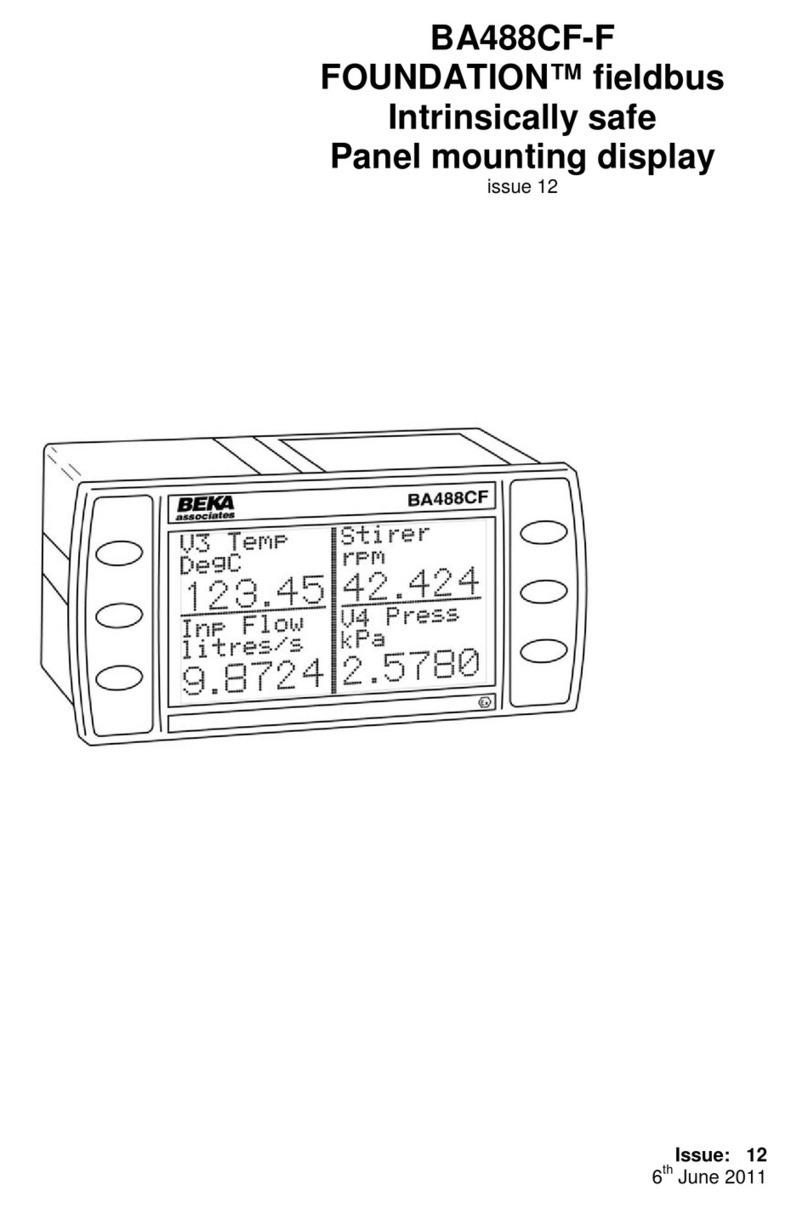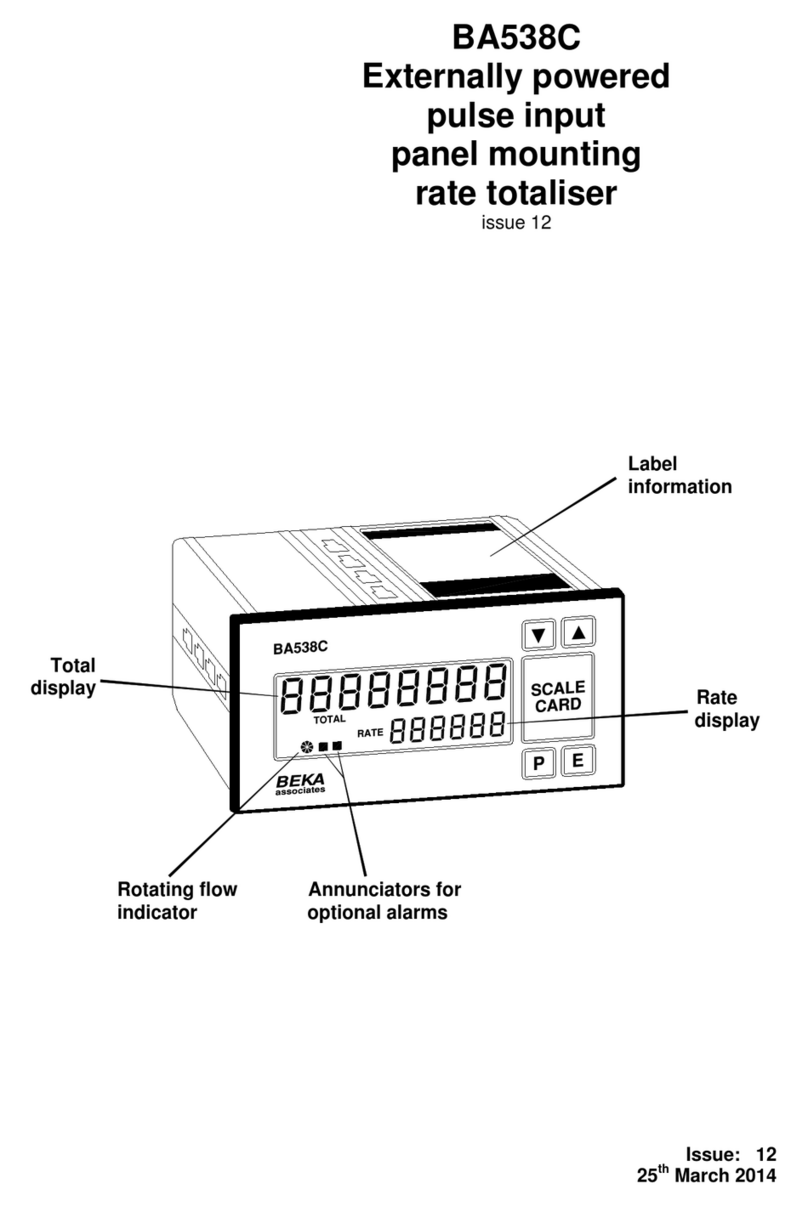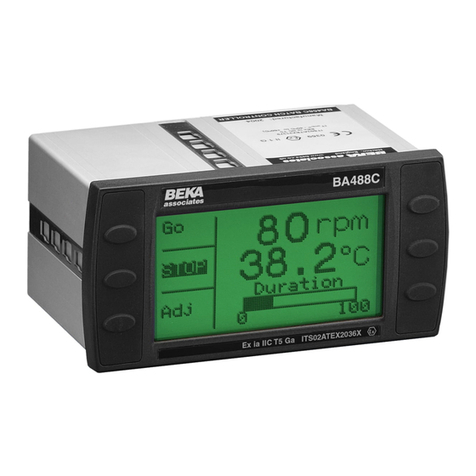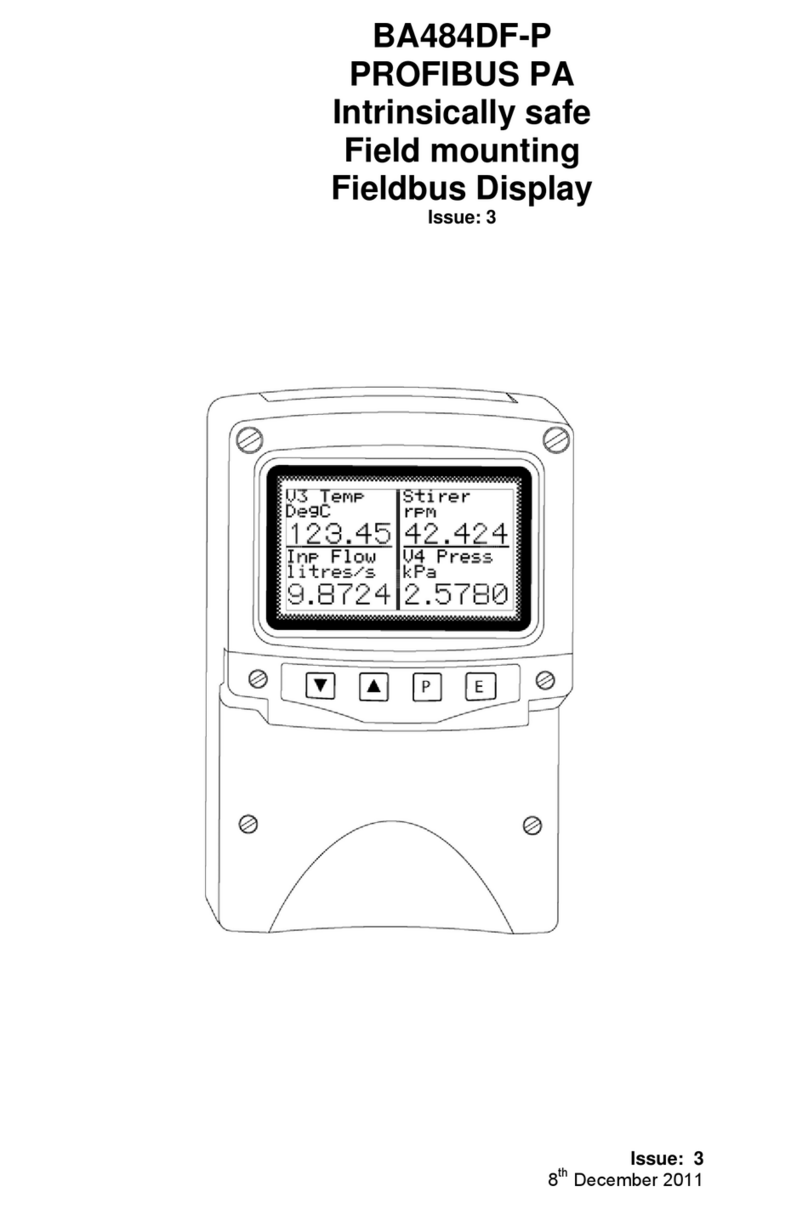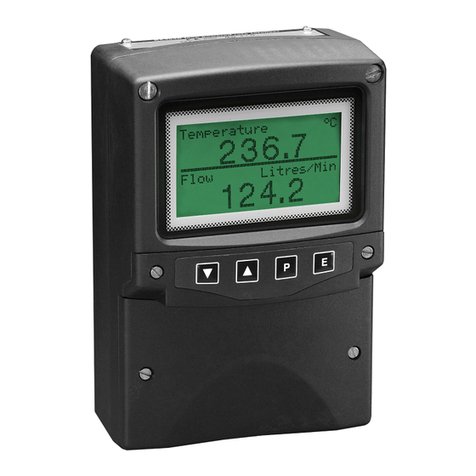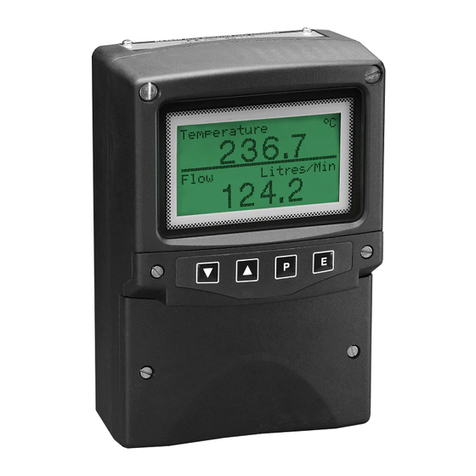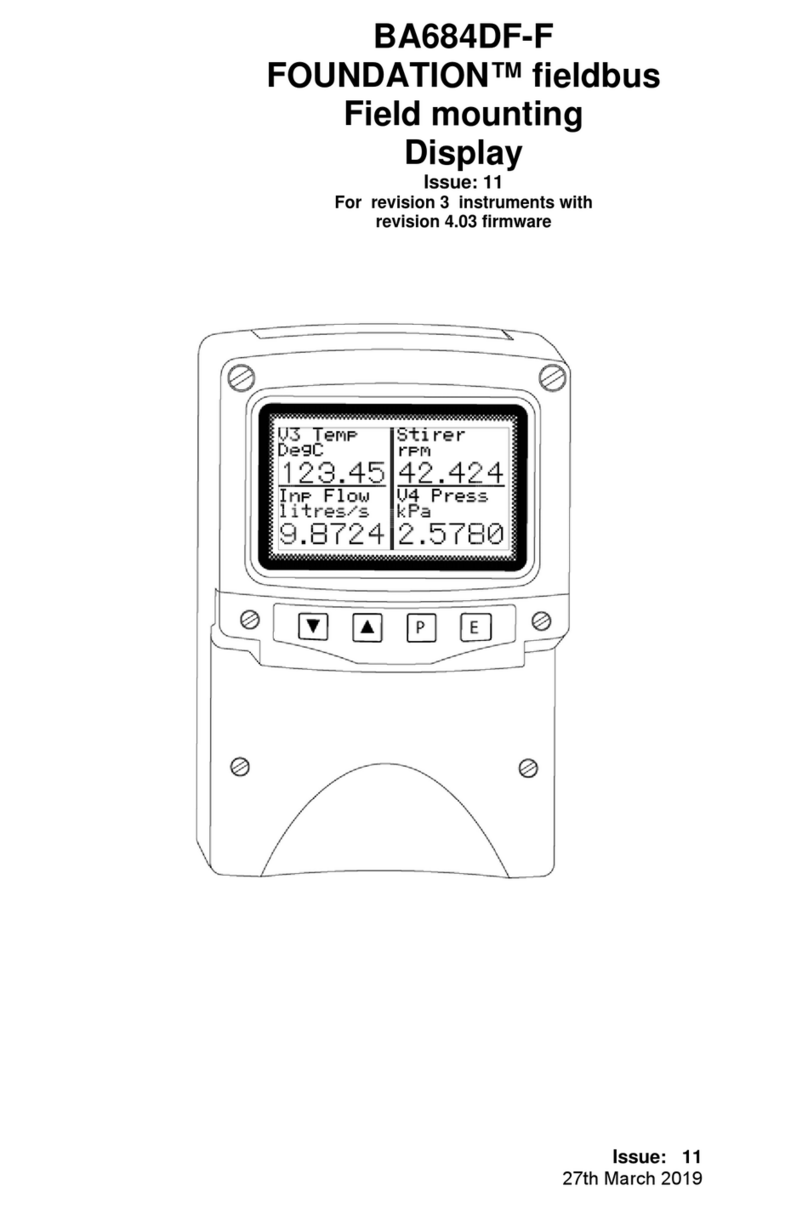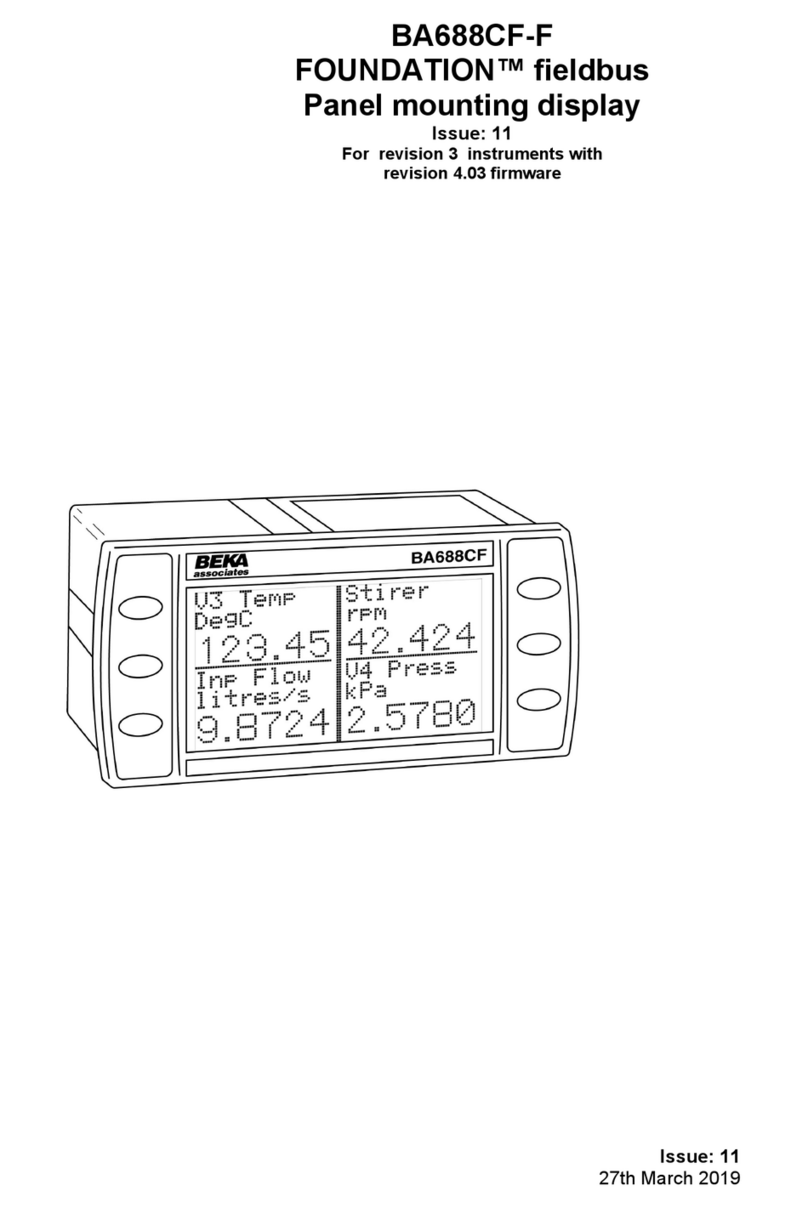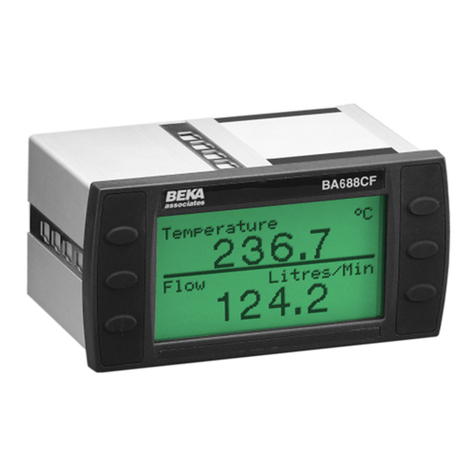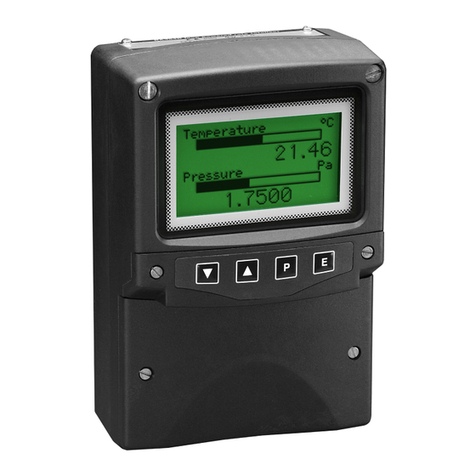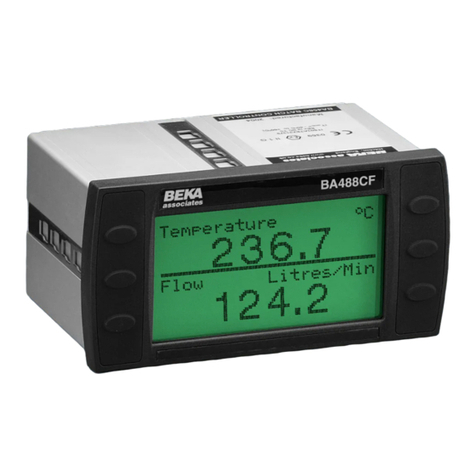
4. INTRINSIC SAFETY CERTIFICATION
4.1 ATEX certificate
The BA488C has been issued with EC-Type
Examination Certificate ITS02ATEX2036X by
Notified Body Intertek Testing & Certification Ltd
(ITS). This has been used to confirm compliance
with the European ATEX Directive 94/9/EC for
Group II, Category 1, gas atmospheres,
Ex ia IIC T5 Ga. The instrument bears the
Community Mark and, subject to local codes of
practice, may be installed in any of the European
Economic Area (EEA) member countries. ATEX
certificates are also acceptable for installations in
Switzerland.
This manual describes installations in explosive
gas atmospheres which conform with
IEC 60079: Part 14 Electrical installation design,
selection and erection. When designing systems
for installation outside the UK, the local Code of
Practice should be consulted.
4.2 Zones, gas groups and T rating
The BA488C EC-Type Examination certificate
ITS02ATEX2036X confirms that it complies with
the requirements for Group II Category 1 G
Ex ia IIC T5 Ga (Tamb –40 to 60oC) apparatus.
When connected to a suitable system the BA488C
may be installed in:
Zone 0 explosive gas air mixture
continuously present.
(Special conditions apply
see below)
Zone 1 explosive gas air mixture
likely to occur in normal
operation.
Zone 2 explosive gas air mixture not
likely to occur, and if it does will
only exist for a short time.
Be used with gases in groups:
Group A propane
Group B ethylene
Group C hydrogen
Having a temperature classification of:
T1 450°C
T2 300°C
T3 200°C
T4 135°C
T5 100°C
At an ambient temperature between –40 and
+60°C.
Note: the guaranteed operating temperature range
of the serial text display is –20ºC to +60ºC.
This allows the BA488C to be installed in all Zones
and to be used with most common industrial
gases.
Special conditions for safe use in Zone 0
In the unlikely event of installation in a Zone 0
potentially explosive atmosphere, the BA488C
Serial Text Display shall be installed such that
even in the event of rare incidents, an ignition
source due to impact or friction between the
aluminium enclosure at the rear of the instrument
mounting panel and iron/steel is excluded.
4.3 Power supply
When installed in a hazardous area the BA488C
must be powered from, and communicate via a
certified communications isolator installed in the
safe area. Either a BA201 Communications
Isolator or a MTL5051 Serial Data Comms Isolator
may be used.
Although other certified barriers or galvanic
isolators have output parameters equal to or less
than the BA488C input parameters, because of the
data conversion performed by the BA201 and
MTL5051, currently these are the only suitable
devices.
The maximum permitted cable parameters are
shown in section 5.
4.4 External switches
For applications requiring operator inputs to be
made by large industrial push-buttons, terminals
S1 to S7 allow external switches to be connected
to the text display. When the external push-
buttons are enabled in the configuration menu, the
front panel push-buttons are automatically
disabled.
Terminals S1 to S7 have the following combined
output safety parameters:
Uo = 14.7V dc
Io = 99mA dc
Po = 0.6W
The switches and associated wiring connected to
the terminals must comply with the requirements
for simple apparatus. i.e. they must have IP20
protection and be capable of withstanding a 500V
rms insulation test to earth for one minute. Most
industrial push-buttons satisfy these requirements
7
